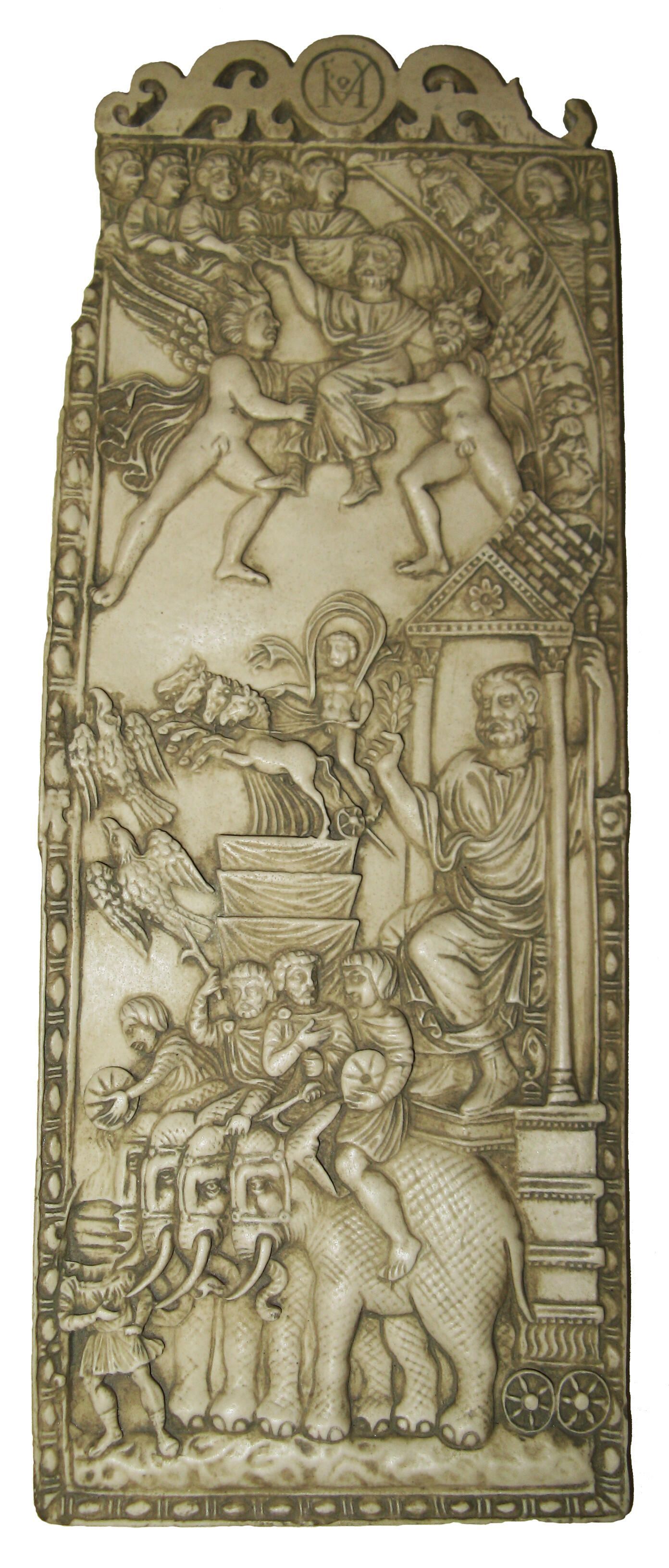Gherardesca Diptych
Name/Title
Gherardesca DiptychEntry/Object ID
80R1034Description
Relief with ivory patina illustrating three stages in an imperial apotheosis. One leaf of a diptych.Type of Sculpture
ReliefArtwork Details
Medium
ResinSubject
ApotheosisContext
This carved ivory panel is one half of a diptych, a hinged book cover more usually made of wood. It shows an orator, a Roman statesman, being raised to heaven in a scene reminiscent of depictions of apotheosis (elevation to godhood) aimed at conveying the divinity of an emperor or member of the imperial family. It is not surprising, therefore, that the central figure of this scene was believed to be an emperor, but more recently scholars have proposed that this figure is Roman senator and pagan apologist Quintus Aurelius Symmachus (c. 340-402 CE), who held the prestigious offices of Governor of Africa Proconsularis and Urban Prefect of Rome during his political career. Symmachus is best known for his letters and dispatches, which survive in fragments, and for his opposition to the removal of the Altar of Victory from the Roman Curia or Senate House, by the emperor Gratian (r. 359-383 CE). The panel shows Symmachus being raised to heaven where five figures appear to be welcoming him. His ascension is aided by two genii (winged personifications of the divine nature of a person). Behind him an arc, in the top right corner, contains signs of the zodiac. These, some believe, must relate to Mithraism, a religion that rivalled Christianity during the first three centuries CE. Below the man there is a four-horse chariot beside two eagles, and these are symbols of the ascension of Helios, the sun god. Panels like these were representative of pagan revival under the Christian empire. The images on the panel show that Roman worship of heroes and emperors had not disappeared from a Roman’s religious consciousness. Deification of emperors was popular, and focused religion on the cult of the emperor, which in turn served to legitimize an emperor’s rule. The name, the Gherardesca Diptych, originates in the name of the Florentine Conte di Gherardesca, from whose collection of Roman works the British Museum originally acquired this fascinating piece.Collection
Roman EmpireMade/Created
Date made
300 CE - 402 CETime Period
Late AntiqueEthnography
Cultural Region
City
RomeCountry
ItalyCulture/Tribe
Roman

